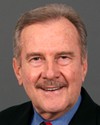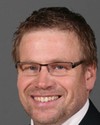Thank you, Mr. Chair.
I would like to introduce Mr. Bill Pilkington, the chief nuclear officer at AECL.
My colleague Bill Pilkington and I appreciate the opportunity to be here.
We will also be very pleased to welcome you to our Chalk River facility on April 13.
We very much look forward to hosting you.
I would like to provide members of the committee with a brief update on our most urgent priority at AECL: the safe repair and return to service of the NRU. Bill will then provide more technical detail on the next phase of the repair sequences.
As you know, intense repair operations continue around the clock, involving over 300 highly qualified AECL staff and industry partners.
There are 300 of us working around the clock on the repairs.
As of today, the weld repair portion of the outage is 60% complete.
The process has been very painstaking. Our progress has been impeded by the need to overcome technical problems, to inspect, analyze, and understand irradiated metal behavior, and to measure and evaluate stress on the vessel structure. What we are doing has never been done in the history of the nuclear industry. It is probably the most complex, precise, and sophisticated welding operation ever undertaken in a radioactive environment.
The challenges have been daunting, but weld by weld we are getting to our goal of safely repairing the NRU and restarting it. We have successfully completed eight of ten weld repair sites, representing more than half of the repair work. When you do visit Chalk River you will see the nature of the challenges and the solutions our people have devised to meet them.
We have invented and are using many innovative remote tools. These complex tools, equipped with vision systems, have to be compact enough to pass through a very small opening at the top of the reactor, about the size of a baseball that could fit through. They are then fed nine metres down into the large reactor vessel, where they unfold and align with the vessel wall. Welding is controlled by operators with TV screens and joysticks, three storeys above the repaired site.
Through excellent teamwork between our employees and suppliers, and with the best advice from the world's most eminent welding and technical authorities, we are getting the job done.
The two remaining areas of corrosion, the ones presenting the biggest challenges, are now being tackled. The relatively large size of the two remaining repair sites makes them by far the most difficult and complex. For each of these repairs, four distinct phases of work must be completed in sequence, all adding time to the job but absolutely necessary.
In light of this complexity and the accumulated experience from the repair work completed to date, it became evident to us that the schedule needed to be revisited.
AECL, with the advice of industry experts in welding technology and performing outages, has conducted a review of the work schedule. The result is that we now estimate NRU will resume isotope production by the end of July. This new schedule has built in prudent contingency, reflecting the difficulty inherent in these final repairs.
Repairs are expected to be complete for the first of the remaining sites later today. For the final repair site, the first of four incremental phases—weld development—is under way. Regular progress updates will continue to be provided based on the revised schedule.
Mr. Chairman, all of us at AECL feel the pressure every day to get the repairs completed as soon as possible so that medical isotopes from NRU can be used to help patients all over the world. Having said that, we absolutely must get these highly delicate repairs done right. There is no margin for error. We have but one chance to develop and execute the correct repair strategy for each unique repair site in the reactor; otherwise we risk damaging the vessel wall and extending the repair.
Bill will discuss the repair operation in more detail in a moment. He will also outline in more detail the reasons for the revision of our estimated return to service. The extension to the repair schedule is indeed regrettable. We are deeply aware of its implications on isotope supplies for patients.
So let me reiterate. AECL is making every effort to return the NRU to service as quickly and as safely as possible. More resources are being applied to the project, including additional aluminum welding specialists and other technical expertise.
Mr. Chairman, I would now like to turn things over to Bill Pilkington to continue our opening remarks.




